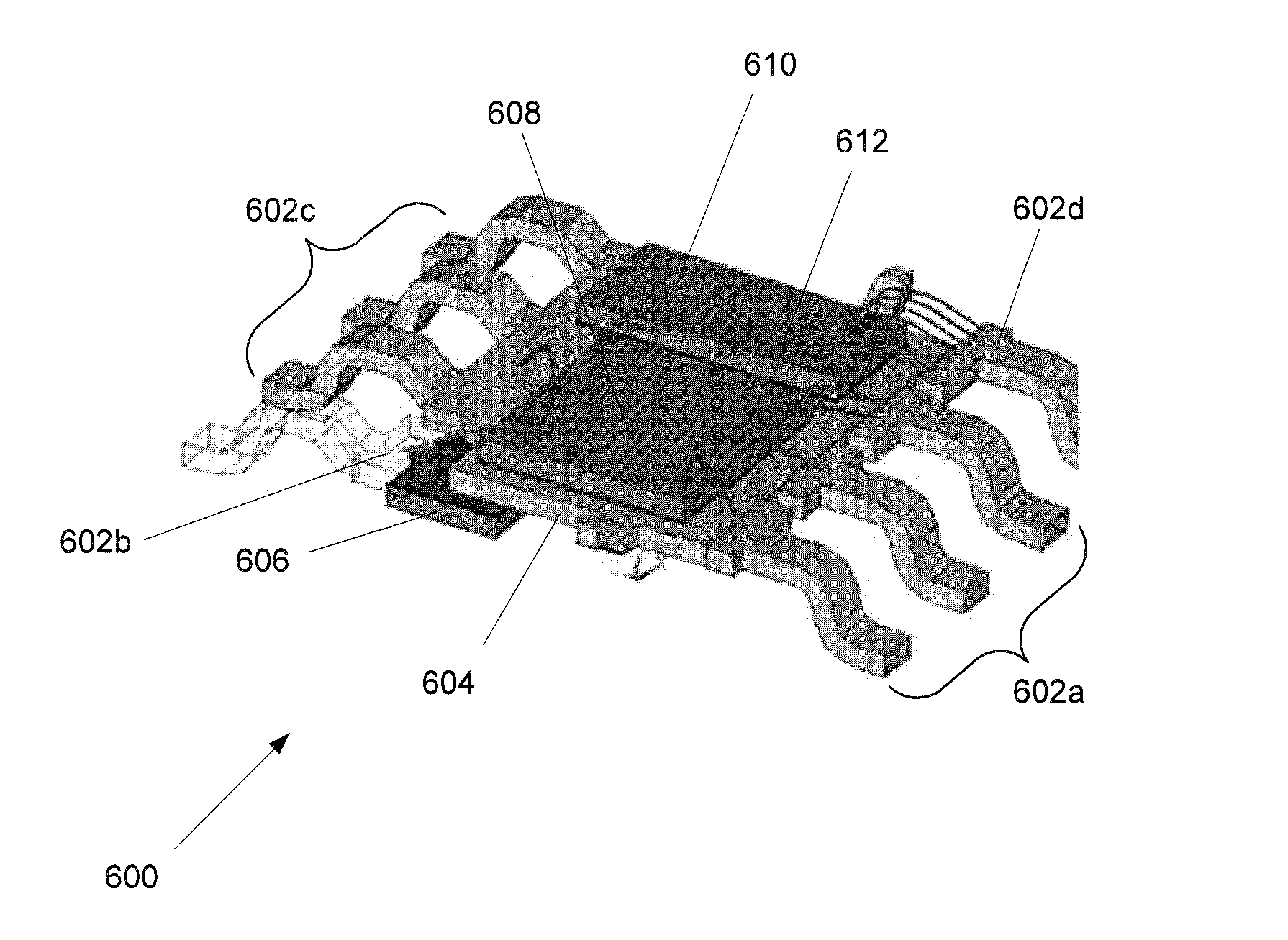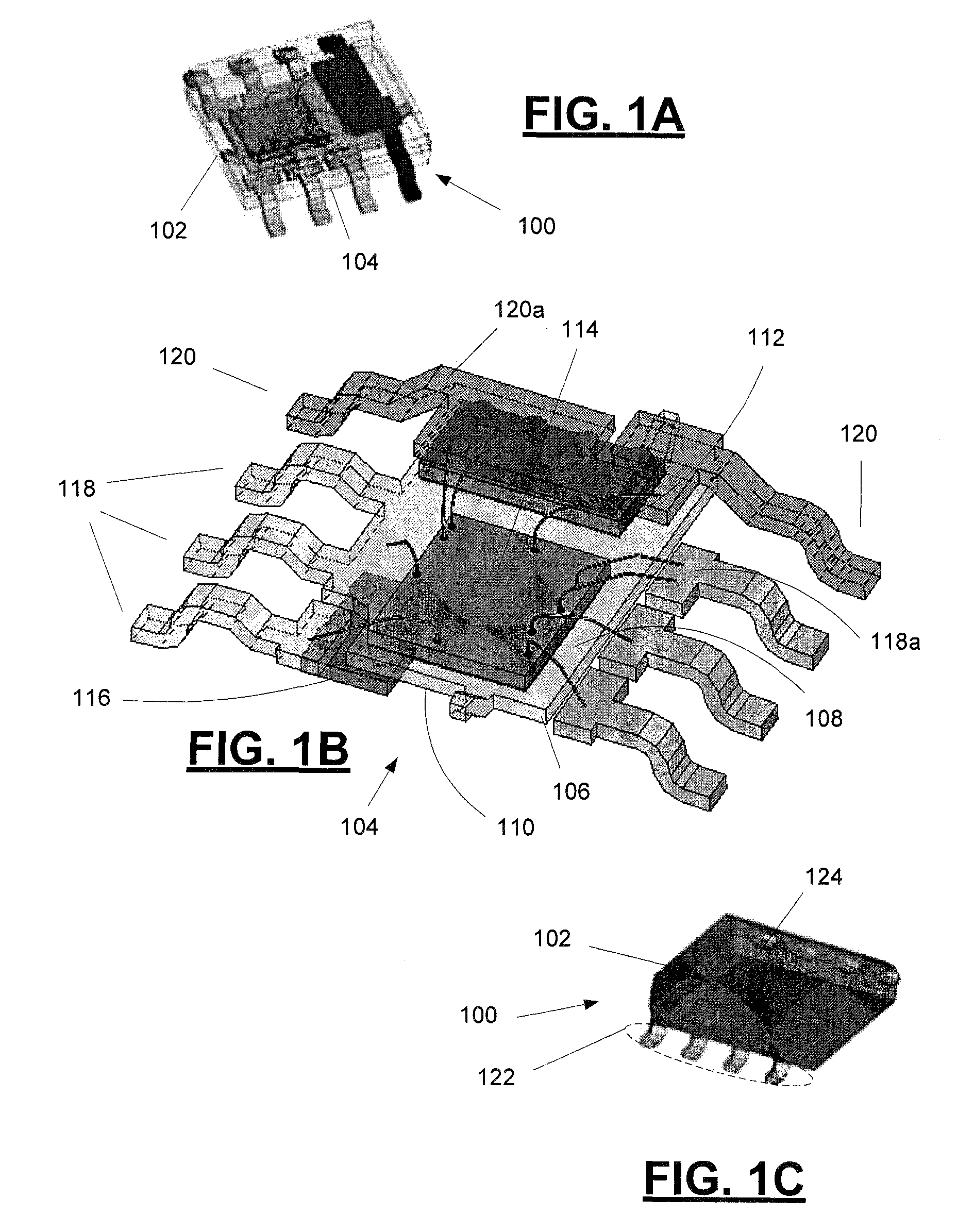Semiconductor package with stacked dice for a buck converter
a technology of buck converter and stacked dice, which is applied in the direction of semiconductor devices, semiconductor/solid-state device details, electrical equipment, etc., can solve the problems of large parasitic capacitance and inductance, and the prior art buck converter requires a relatively large footprint, so as to reduce the footprint of the device, and dissipate heat
- Summary
- Abstract
- Description
- Claims
- Application Information
AI Technical Summary
Benefits of technology
Problems solved by technology
Method used
Image
Examples
Embodiment Construction
[0017]Referring to FIG. 1A, buck converter package 100 is shown enclosed in molding compound 102. For the sake of illustration, molding compound 102 has been shown in phantom. The assembly 104 is disposed within molding compound 102 and is shown in more detail in FIG. 1B.
[0018]Referring now to FIG. 1B, assembly 104 is comprised of conductive die attach pad 106, which has a first surface 108 and a second surface 110, opposite first surface 108. Low side die 112 and controller die 114 are mounted on first surface 108. High side die 116 is mounted on second surface 110 of die attach pad 106. As will be described in detail elsewhere in this application, low side die 112 is a flip chip die with its drain placed in electrical communication with the source of high side die 116 through conductive die attach pad 106. High side die 116 is also a flip chip die. Electrical connections are made between the components of the assembly 104 and the environment outside of the molding compound 102 (se...
PUM
 Login to View More
Login to View More Abstract
Description
Claims
Application Information
 Login to View More
Login to View More - R&D
- Intellectual Property
- Life Sciences
- Materials
- Tech Scout
- Unparalleled Data Quality
- Higher Quality Content
- 60% Fewer Hallucinations
Browse by: Latest US Patents, China's latest patents, Technical Efficacy Thesaurus, Application Domain, Technology Topic, Popular Technical Reports.
© 2025 PatSnap. All rights reserved.Legal|Privacy policy|Modern Slavery Act Transparency Statement|Sitemap|About US| Contact US: help@patsnap.com



